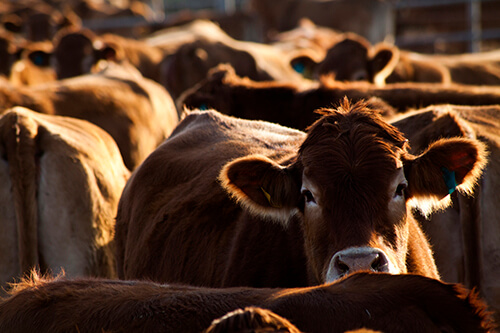What is the difference between the feed additives Rumensin and Bovatec?
Oct 21, 2019

By: Beef-cattle.extension.org
Both Rumensin and Bovatec are ionophores approved for use with beef cattle. Both can be fed to growing and finishing cattle at specific levels for improvement of feed efficiency. They are also both approved as coccidiostats which will control cocci. However, neither should be used for outbreaks of coccidiosis, but they do work effectively as a control or preventative measure.
Rumensin is commonly used for feedlot cattle. Presumably, this is related to ancillary benefits on acidosis control and controlling intake on high-grain diets (much of the data on Rumensin has been collected at the University of Nebraska with finishing cattle and acidosis). Bovatec is commonly used in forage situations, but both can work in either situation. As a general rule, intake will be depressed while maintaining gain (feedlot example with Rumensin) or gain increased with similar intake or even increased intake on forages. Ionophores have different approvals based on the target beef animal. So, please be sure to feed it correctly depending on whether you are growing calves or finishing cattle and use the correct one for cows or bulls
.
The mode of action is to target specific bacteria in the rumen called gram-positive bacteria, which is a laboratory test to categorize bacteria. These bacteria are more prominent acetate producers, whereas the gram-negative bacteria are not impacted by these ionophores. What this leads to is a shift in the amount of propionate produced in the rumen. The propionate is used more efficiently by cattle than acetate, which leads to an improvement in feed efficiency. As energy content (grain) increases in the diet, the response is probably less because more propionate is produced anyway. However, feeding Rumensin is still quite cost effective in feedlot diets despite the relatively small amount of forage.
Both Rumensin and Bovatec are ionophores approved for use with beef cattle. Both can be fed to growing and finishing cattle at specific levels for improvement of feed efficiency. They are also both approved as coccidiostats which will control cocci. However, neither should be used for outbreaks of coccidiosis, but they do work effectively as a control or preventative measure.
Rumensin is commonly used for feedlot cattle. Presumably, this is related to ancillary benefits on acidosis control and controlling intake on high-grain diets (much of the data on Rumensin has been collected at the University of Nebraska with finishing cattle and acidosis). Bovatec is commonly used in forage situations, but both can work in either situation. As a general rule, intake will be depressed while maintaining gain (feedlot example with Rumensin) or gain increased with similar intake or even increased intake on forages. Ionophores have different approvals based on the target beef animal. So, please be sure to feed it correctly depending on whether you are growing calves or finishing cattle and use the correct one for cows or bulls
.
The mode of action is to target specific bacteria in the rumen called gram-positive bacteria, which is a laboratory test to categorize bacteria. These bacteria are more prominent acetate producers, whereas the gram-negative bacteria are not impacted by these ionophores. What this leads to is a shift in the amount of propionate produced in the rumen. The propionate is used more efficiently by cattle than acetate, which leads to an improvement in feed efficiency. As energy content (grain) increases in the diet, the response is probably less because more propionate is produced anyway. However, feeding Rumensin is still quite cost effective in feedlot diets despite the relatively small amount of forage.